- Innovation
- Creativity
Quanzhou, a city steeped in history and culture, is home to a rich culinary heritage. As one of China's eight major regional cuisines, Fujian (or Min) cuisine is celebrated for its distinctive cooking techniques and bold flavors, making it a beloved choice among food enthusiasts. Within this broad culinary tradition, the flavors of Quanzhou stand out for their unique character and innovation.

Mr.Hu Manrong, a Chinese Certified Master Chef and Executive Vice Chairman of the Chef Committee of the Chinese Culinary Association.
On December 15, 2023, at the "New Fujian Cuisine · The Best of Minnan" awards ceremony, Hu Manrong, a renowned culinary master and Executive Vice Chairman of the Chinese Culinary Association's Master Chef Committee, delivered an insightful keynote address on the future of Fujian cuisine. In his speech, Hu explored the rich history and defining features of Fujian cuisine, offering a vision for its evolution that balanced tradition with bold innovation. His remarks, framed by the slogan "Preserve the tradition, innovate boldly," struck a chord with the audience, earning widespread applause for their depth and thoughtfulness.
With over 30 years of experience in the culinary world, Hu Manrong is widely regarded for his innovative contributions to Fujian cuisine. As the Executive Chef at Rongyu International Hotel, he has significantly shaped the development of Fujian culinary art, blending tradition with creativity in his approach to flavors, presentation, ingredients, and techniques. In anticipation of the Chinese New Year, we visited Hu at Rongyu International Hotel in Shishi to gain further insights into his approach to culinary innovation.
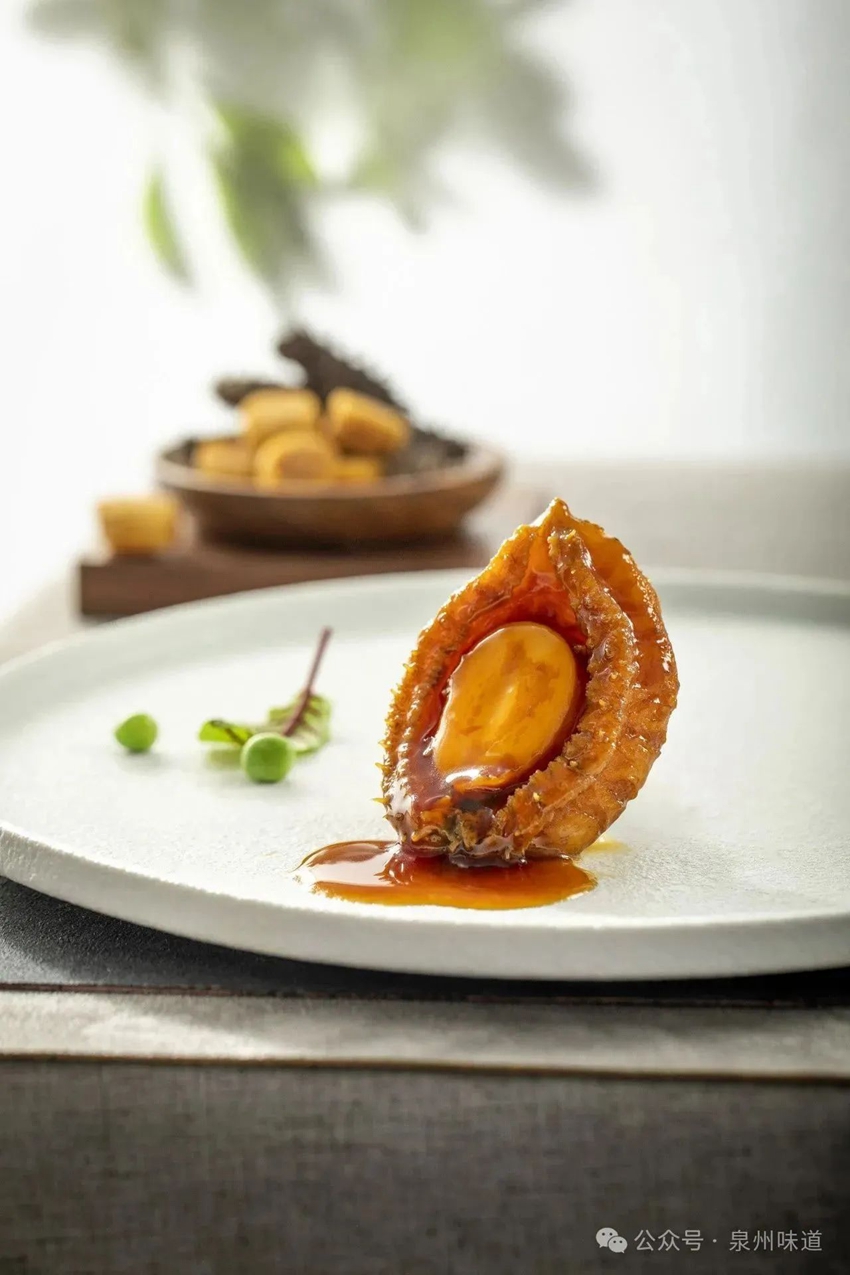
Signature Dish: Braised Golden Abalone
Master Chef Hu Manrong – A Humble Pursuit of Excellence
Our meeting with Hu began early in the morning in his office, where soft sunlight poured in, casting a warm glow over the space. With a gentle smile and an air of humility, Hu began to recount his remarkable journey in the culinary world.
Hu's career began at the Beijing People's Congress Hall Training Center, where he spent over a year studying the five essential elements of Chinese cuisine—color, aroma, taste, shape, and utensils—while mastering regional cooking techniques. Later, he became a disciple of renowned chef and abalone expert Yang Guanyi, honing his skills and pushing the boundaries of abalone preparation. Hu's exploration of this prized ingredient led to significant innovations in both its flavor and presentation. His travels to culinary hotspots like France and Singapore further enriched his understanding of global cuisine, helping him refine his craft.
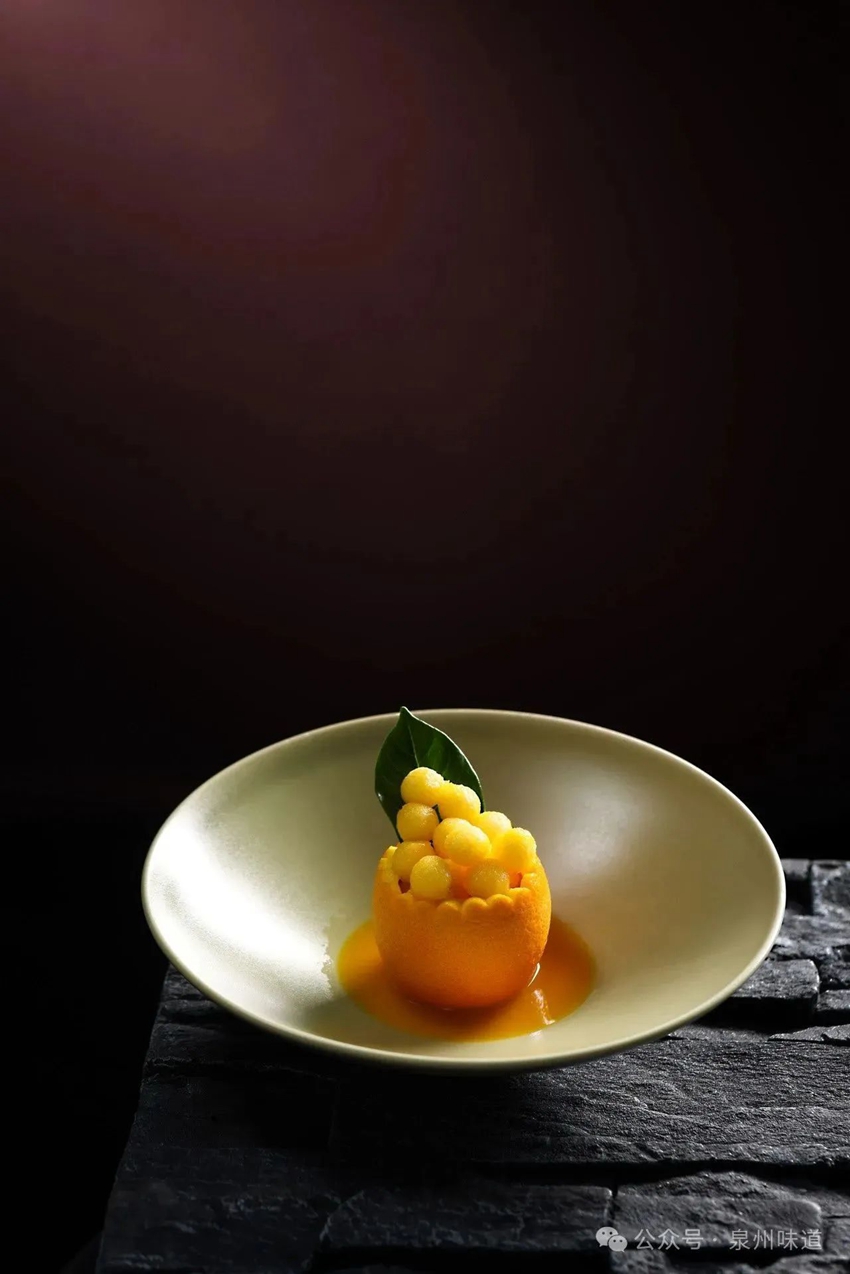
Signature Dish: Orange Jade Delight
Innovative Dishes with a Modern Twist
Hu's approach to cooking is a fusion of the culinary traditions of Fujian, Guangdong, Chaozhou, Sichuan, Hangzhou, Shandong, and Hunan. His dishes are not only rich in flavor but are also a feast for the eyes. Hu believes that a chef should excel both in cooking techniques and in pairing ingredients to achieve nutritional balance and aesthetic appeal, which reflect a deep respect for both food and the dining culture. His former students, many of whom have become leading chefs in China, carry forward his teachings, continuing to innovate in the culinary world.
For Hu, the ultimate goal of cooking is to satisfy the diner's palate while preserving cultural authenticity. He emphasizes the importance of ingredient treatment and meticulous attention to detail in every step of the cooking process. His culinary creations are expressions of his passion for food and his dedication to promoting traditional Chinese cooking methods.
To preserve Fujian's Min Nan culinary heritage, Hu has meticulously recreated ancient dishes from the Song Dynasty's "Shanjia Qinggong," organizing tasting events in Shishi to showcase these historical flavors. His efforts have garnered widespread praise and helped raise Shishi's profile as a city renowned for its culinary heritage, contributing to its development as a model city for Fujian cuisine.
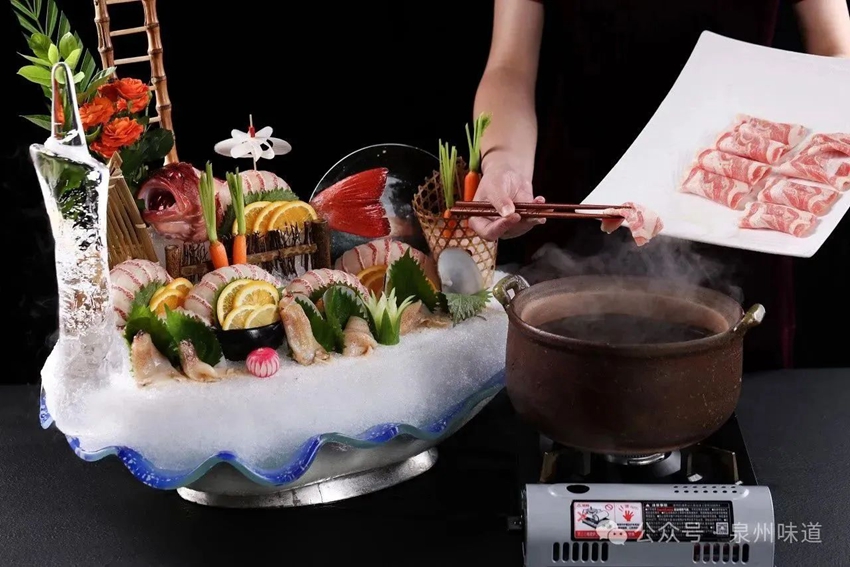
Signature Dish: "Bo Xian Gong" – Rabbit Meat Hot Pot
Innovations in Presentation and Dining Experience
Fujian cuisine holds an esteemed place in China's culinary landscape, known for its unique flavors and technical sophistication. Hu believes that culinary innovation should first be reflected in the presentation of dishes. By doing so, traditional flavors can be preserved while also catering to the modern diner's expectations. His aim is to offer a multi-sensory experience that stimulates the visual, auditory, and culinary senses, giving new life to traditional dishes.
The artistry of Hu's presentation is evident in the careful selection of colors, shapes, and tableware, transforming each dish into a visual masterpiece. He also adds innovative touches, such as intricate ingredient carvings, which enhance the dish's aesthetic appeal.
Moreover, Hu embraces the use of new utensils and presentation styles, carefully selecting or designing vessels that complement specific dishes. By incorporating creative props and emphasizing ambiance—through lighting, music, and thematic décor—he elevates the overall dining experience, ensuring that guests are immersed in a cultural and sensory journey.
Additionally, Hu brings the cultural stories behind each dish to life. By sharing the origins of ingredients or showcasing the cooking process, he enriches the dining experience, helping diners appreciate the cultural significance of their meal.
Innovating Flavors for the Modern Palate
Fujian cuisine is celebrated for its emphasis on fresh, fragrant ingredients and a balanced blend of sweet and sour flavors. Hu believes that the future of Fujian cuisine lies in its ability to innovate while staying true to its foundational flavors. Drawing inspiration from both local and international culinary traditions, he emphasizes the importance of emotional connection to ingredients and the careful craftsmanship required at each stage of preparation.
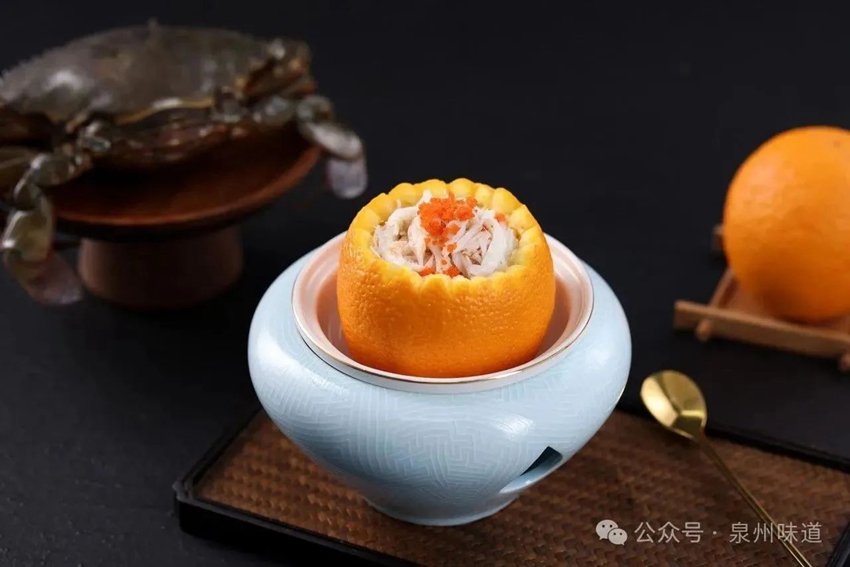
Signature Dish: Crab Stuffed Orange
Ingredient Innovation: Hu's creativity shines through his use of seasonal ingredients, such as crab-stuffed oranges and "Hangxie Jiang" (a sweet sauce), which maintain the balance of freshness and nutrition. He insists that chefs must develop a deep understanding of their ingredients and treat every step of cooking with intention to create dishes that leave a lasting impression.
Technique Innovation: Fujian cuisine offers a wide array of cooking methods, including braising, steaming, and frying, each designed to bring out the full flavor of ingredients. Hu has developed quicker, modern cooking techniques, such as "Ziying Ju" (purple chrysanthemum) and "Yuanyang Zhi Zhi" (Mandarin-duck roasted bird), which have gained popularity among diners seeking fast yet flavorful meals.
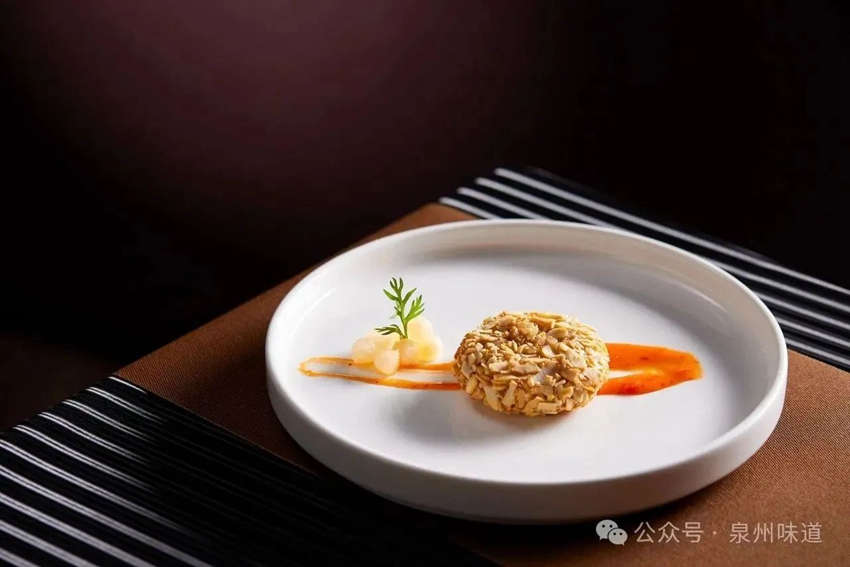
Signature Dish: Crispy Yellow Scallops
Flavor Innovation: Modern diners often crave more complex, layered flavors. Hu has responded to this demand by developing new combinations of sour-sweet and bitter-spicy profiles, creating dishes that satisfy the evolving tastes of contemporary food lovers.
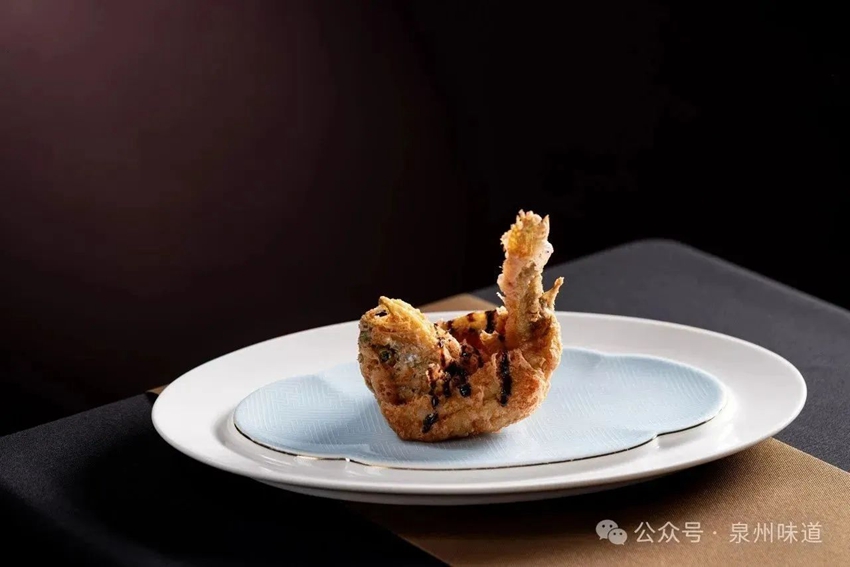
Service Innovation: While traditional service methods carry cultural value, Hu recognizes that today's diners prefer convenience and personalization. He advocates for the integration of modern service options, such as online reservations, to meet the expectations of today's busy patrons.
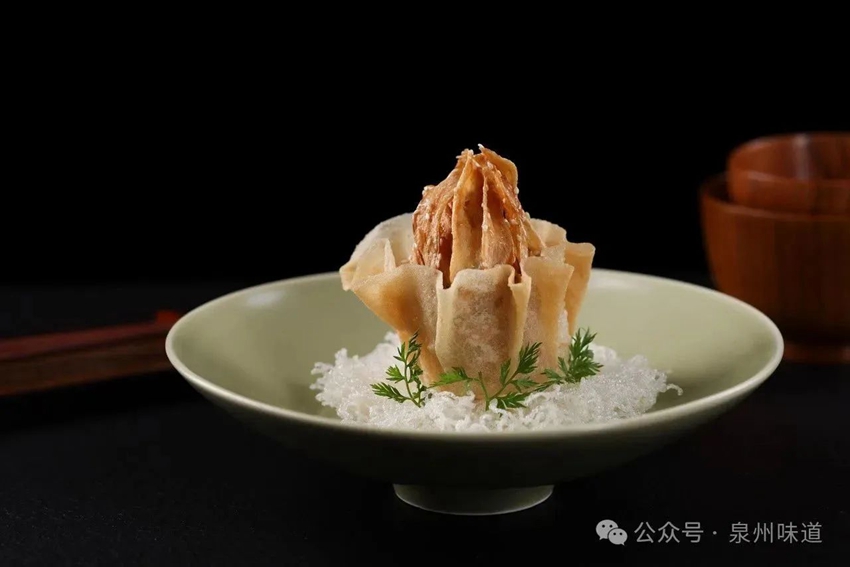
Signature Dish: Burdock Jerky
Preserving Tradition While Innovating
As living standards continue to rise, so too do expectations for food. This drives the innovation and evolution of Fujian cuisine. One standout dish on Hu's menu is "Shanhai Dou," which elegantly combines mountain delicacies with seafood, capturing the essence of Quanzhou's geographical identity while appealing to modern tastes. Hu explains, "Quanzhou, nestled between mountains and the sea, is a fusion of both mountain and ocean flavors, reflecting the city's unique regional character."
Hu also incorporates locally sourced ingredients, such as shrimp oil and shrimp paste from Quanzhou, to infuse his dishes with authentic regional flavors. "Seasoning is the soul of cooking," he says. "Mastering seasoning is key to creating truly authentic Fujian cuisine."
The Future of Fujian Cuisine
For Hu, the future of Fujian cuisine lies in its ability to balance tradition with innovation. "Preserve the essence, innovate boldly," he asserts. While tradition must always be respected, he believes that innovation is essential to keep the cuisine relevant and vibrant. By staying rooted in its cultural heritage while embracing change, Fujian cuisine will continue to evolve and attract new generations of food enthusiasts.
Hu's innovative approach to Fujian cuisine mirrors the spirit of Quanzhou itself—a place where tradition and progress coexist in harmony. This blend of the old and the new is what ensures the enduring appeal of Fujian cuisine on the global gastronomic stage.
Report by: Zeng Guangtai, Wang Yongzheng, Qiu Yongfa
Photos by: Wang Yong
